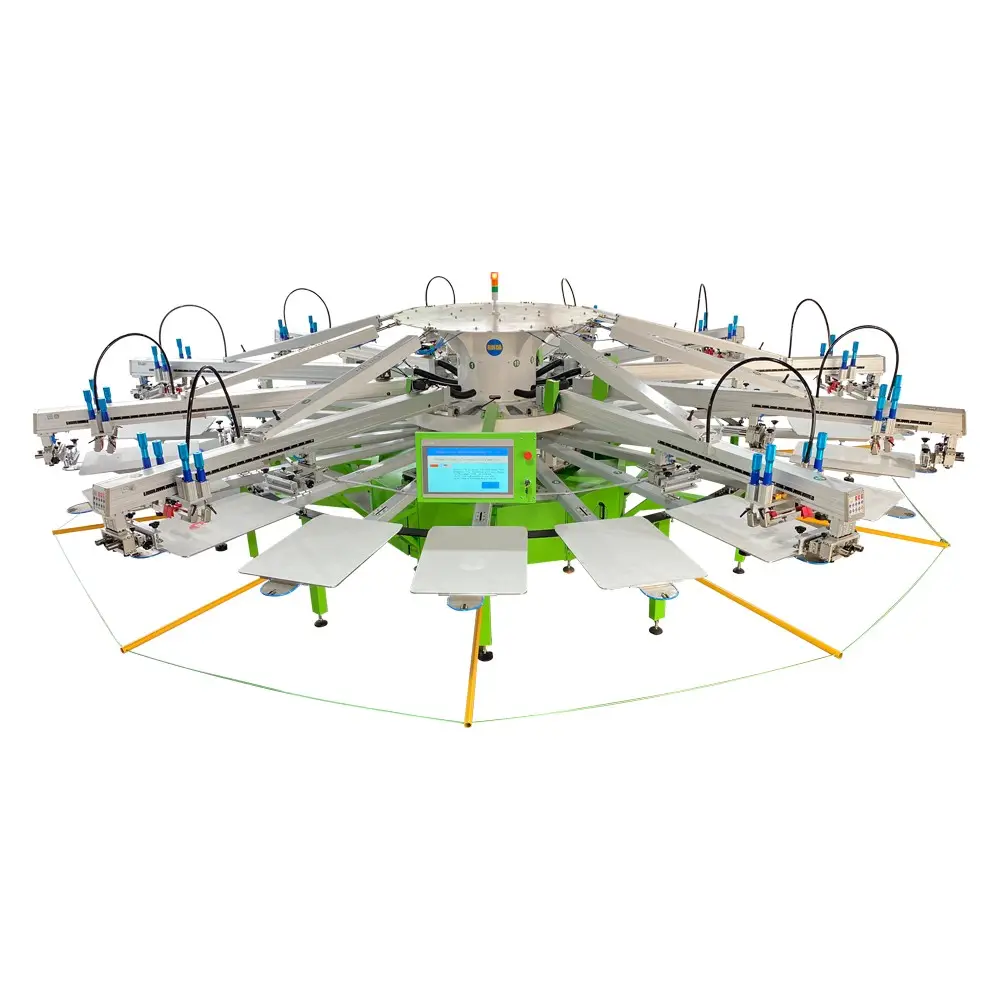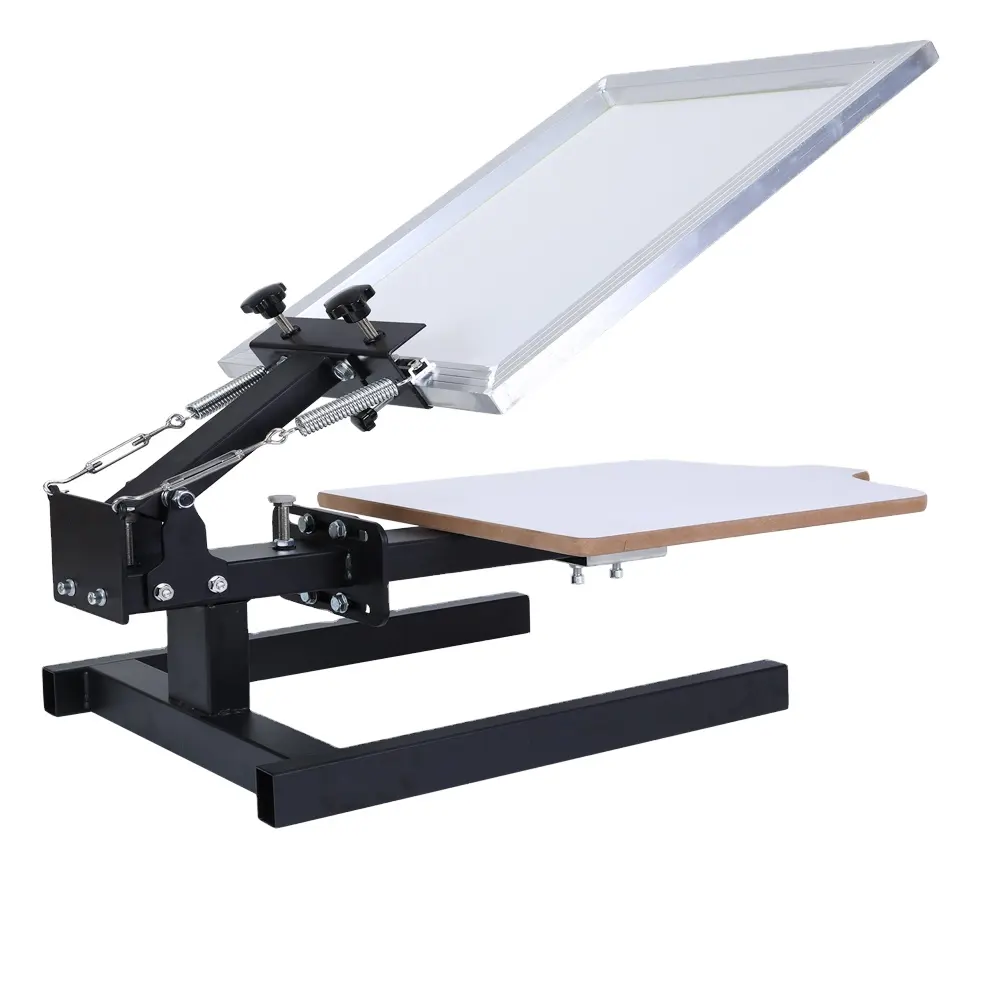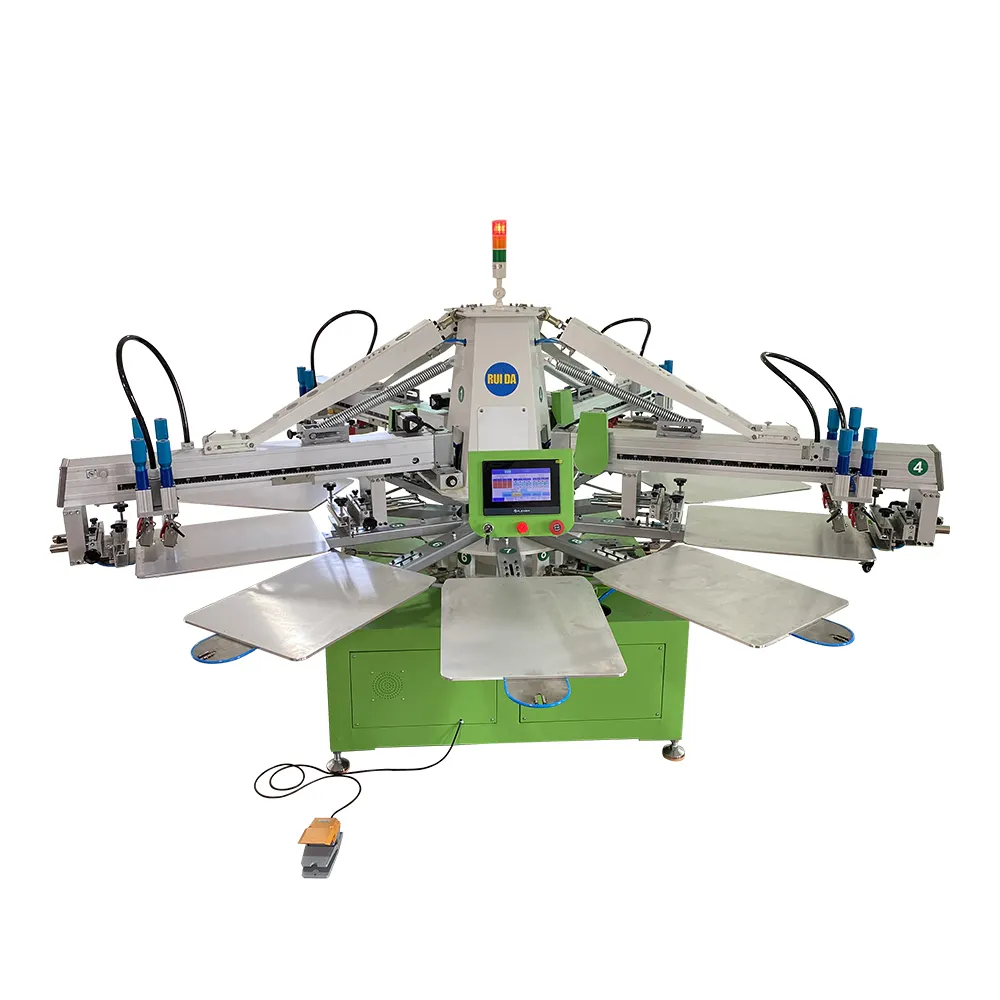tekstiel skermprint
Tekstiel skermprint is 'n veelsydige en wyd gebruikte drukmetode wat daarin bestaan om inkt deur 'n mas stencil op stof te duw. Hierdie tydgeteste tegniek skep duurhape, lewendige ontwerpe op verskeie tekstielmateriale. Die proses begin met die skepping van 'n stencil op 'n fyn mas skerm, gewoonlik gemaak van poliester of nylon. Die areas waar inkt nie deur moet gaan nie, word geblok, terwyl die ontwerpareas oop bly. Die drukker plaas dan die skerm op die stof en gebruik 'n squeegee om inkt deur die masopenings te duw, waardeur die ontwerp op die materiaal oorgedra word. Moderne tekstiel skermprinttoerusting sluit dikwels outomatiese kenmerke in, soos rotasie karouselsisteme en flash-kur-eenhede, wat doeltreffende produksie van veelkleurige ontwerpe moontlik maak. Die tegnologie akkommodeer verskeie tipes inkte, insluitend plastisol, watergebaseerd en discharge-inkte, elk biedend unieke kenmerke en effekte. Hierdie drukmetode excelleer in die produsentheid van duidelike, ondeurdrukte kleure en kan ingewikkelde ontwerpe hanteer terwyl dit konsekwente kwaliteit oor groot produksielopies onderhou. Sy toepassings strek van aangepaste t-skirt druk tot sportkleding, huistekstiele en industriële stofdruk, wat dit 'n essensiële tegnologie in die tekstielbedryf maak.


